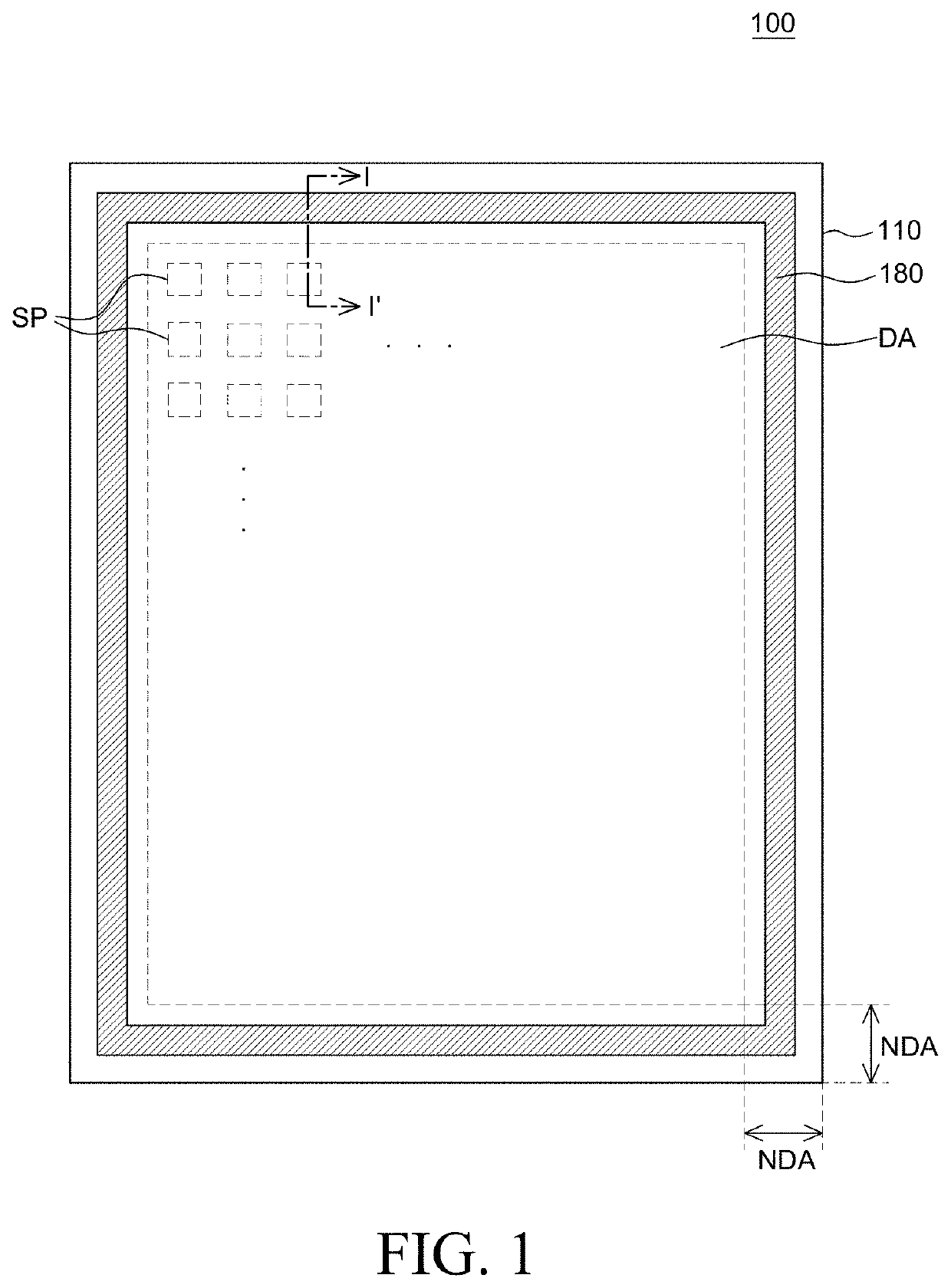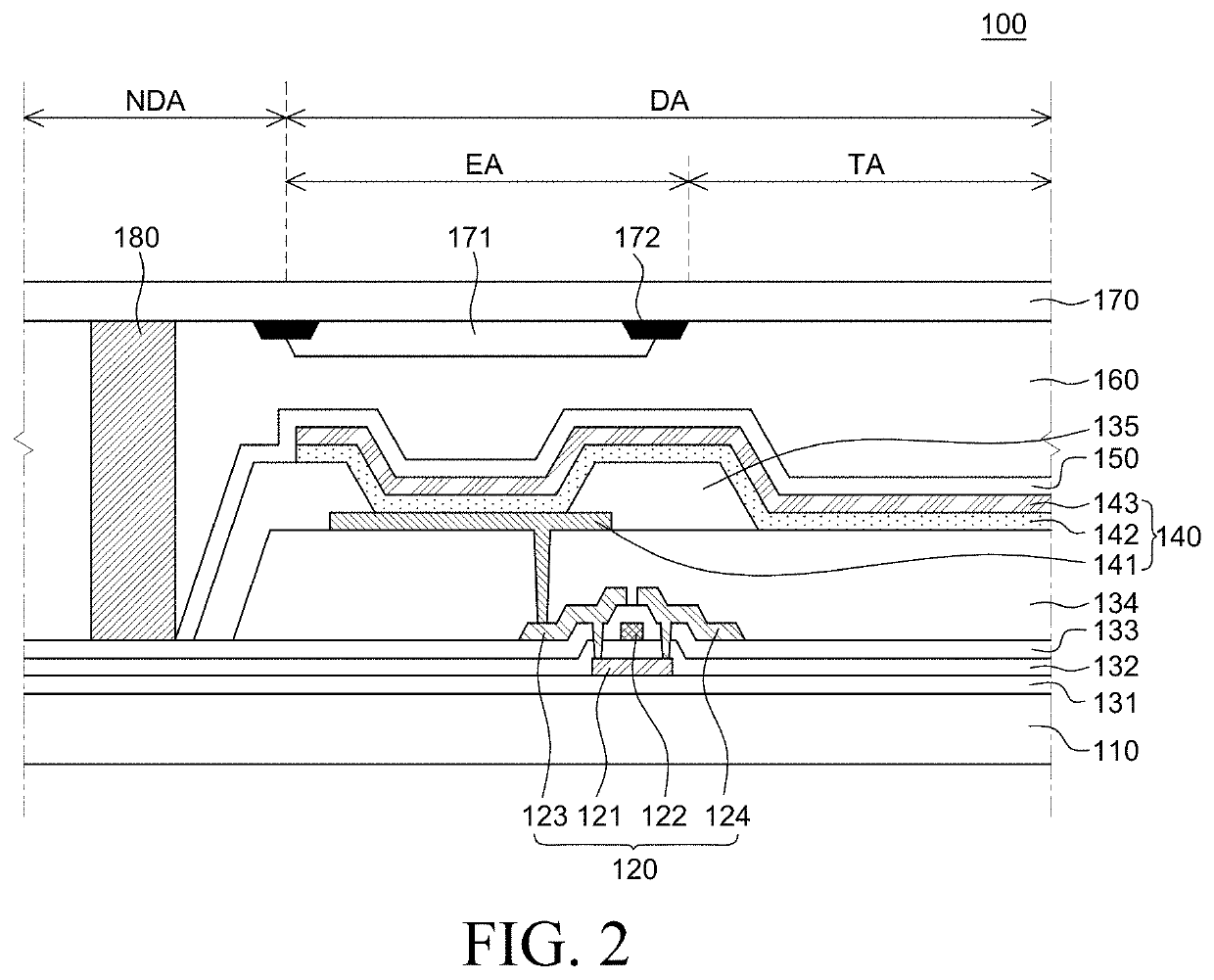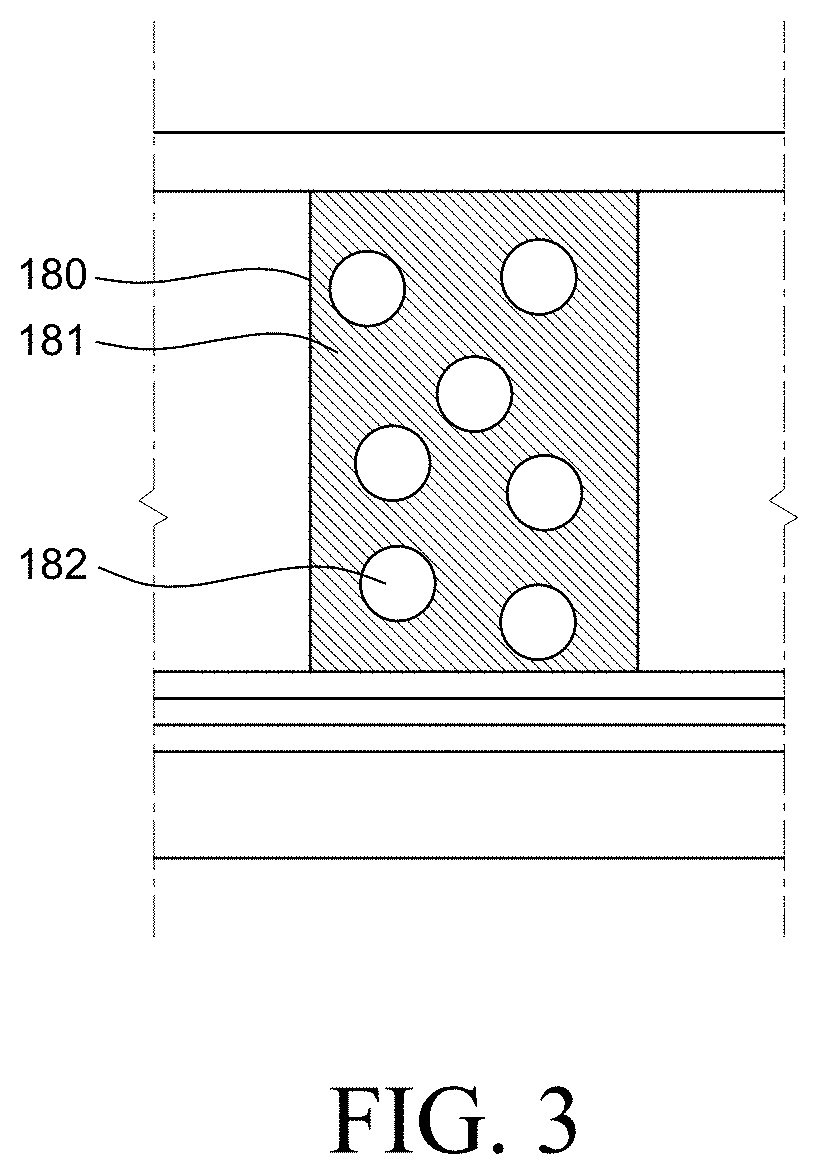Organic light emitting display device
a light-emitting display and organic technology, applied in the direction of organic semiconductor devices, chemistry apparatuses and processes, other chemical processes, etc., can solve the problems of reliability deterioration and lifespan reduction, and achieve the effects of improving light transmittance, excellent resistance to water and oxygen permeation, and improving the transparency of organic light-emitting display devices
- Summary
- Abstract
- Description
- Claims
- Application Information
AI Technical Summary
Benefits of technology
Problems solved by technology
Method used
Image
Examples
preparation embodiment 1
[0116]0.51 g of magnesium nitrate hexahydrate (Mg(NO3)2 6H2O) was put into 10 ml of distilled water and stirred to prepare a precursor solution. After 0.84 g of polyethylene glycol and 0.25 g of sodium hydroxide were dissolved in 20 ml of distilled water, the resultant product was added into the precursor solution followed by stirring at room temperature for 1 hour to synthesize magnesium oxide nanoparticles. The product was centrifuged to separate a precipitate. Then, the separated precipitate was put into ethanol followed by centrifugation and purification. Thereafter, the purified product was dried at 60° C. for 5 hours and then calcined at 400° C. for 1 hour, thereby obtaining magnesium oxide nanoparticle powder.
preparation embodiment 2
[0117]1. First Surface Modification
[0118]A solvent whose pH was adjusted to 4 by adding 0.02 ml of hydrochloric acid into 10 ml of a mixed solution of ethanol and distilled water was prepared. Then, 0.2 g of the magnesium oxide nanoparticle powder of Preparation Embodiment 1 and 2 g of 3-(trimethoxysilylpropyl)diethylenetriamine (TPDT), which is a first surface modifier, were added into the solvent and reacted in a silicone oil tank of 80° C. in boiling water with stirring for 6 hours.
[0119]2. Second Surface Modification
[0120]Then, 16 g of 3-(acryloyloxy)-2-hydroxypropylmethacrylate (AHM), which is a first surface modifier, was added into a reaction bath and reacted for 12 hours with continuous stirring. Thereafter, the product was centrifuged to separate a precipitate. Then, the precipitate was put into ethanol followed by centrifugation and purification. Then, the product was dried at 50° C. for 3 hours, thereby obtaining magnesium oxide particles whose surfaces were modified with...
preparation embodiment 3
[0121]A solvent whose pH was adjusted to 4 by adding 0.02 ml of hydrochloric acid into 10 ml of a mixed solution of ethanol and distilled water was prepared. Then, 0.2 g of the magnesium oxide nanoparticle powder same as Embodiment 1 and 4 g of 3-methacryloxypropyl trimethoxysilane (MPS), which is a surface modifier, were added into the solvent and reacted in a silicone oil tank of 80° C. in boiling water for 12 hours. The product was centrifuged to separate a precipitate. Then, the precipitate was put into ethanol followed by centrifugation and purification. Thereafter, the product was dried at 50° C. for 3 hours, thereby obtaining magnesium oxide particles whose surfaces were modified with MPS.
PUM
| Property | Measurement | Unit |
|---|---|---|
| diameter | aaaaa | aaaaa |
| diameter | aaaaa | aaaaa |
| thickness | aaaaa | aaaaa |
Abstract
Description
Claims
Application Information
 Login to View More
Login to View More - R&D
- Intellectual Property
- Life Sciences
- Materials
- Tech Scout
- Unparalleled Data Quality
- Higher Quality Content
- 60% Fewer Hallucinations
Browse by: Latest US Patents, China's latest patents, Technical Efficacy Thesaurus, Application Domain, Technology Topic, Popular Technical Reports.
© 2025 PatSnap. All rights reserved.Legal|Privacy policy|Modern Slavery Act Transparency Statement|Sitemap|About US| Contact US: help@patsnap.com



